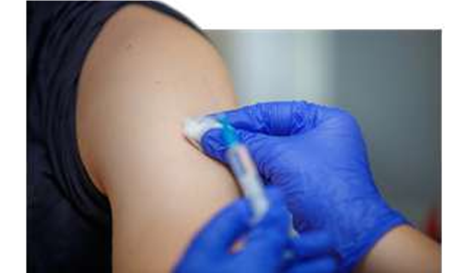A nurse is collecting data from a client who is recovering from a recent stroke.
Which of the following findings should indicate to the nurse the need for a referral to a speech-language pathologist?
Coughing while eating.
Fine motor tremors.
Facial flushing.
Urinary incontinence.
The Correct Answer is A
Coughing while eating after a stroke may be caused by dysphagia, a swallowing disorder that can lead to aspiration, pneumonia and infection. A speech-language pathologist can assess and treat dysphagia and help the client improve their swallowing function.
Choice B is wrong because fine motor tremors are not related to speech or language problems.
They may be caused by damage to the cerebellum or basal ganglia, parts of the brain that control movement and coordination.
Choice C is wrong because facial flushing is not related to speech or language problems.
It may be caused by high blood pressure, fever, anxiety or other conditions.
Choice D is wrong because urinary incontinence is not related to speech or language problems.
It may be caused by damage to the spinal cord, bladder, pelvic floor muscles or nerves that control urination.
Nursing Test Bank
Naxlex Comprehensive Predictor Exams
Related Questions
Correct Answer is C
Explanation

The correct answer is choice C. Allergy to gelatin is a contraindication for the inactivated influenza vaccine because gelatin is one of the ingredients in the vaccine. People with severe, life-threatening allergies to any ingredient in a flu vaccine (other than egg proteins) should not get that vaccine.
Choice A is wrong because pregnancy is not a contraindication for the inactivated influenza vaccine. In fact, pregnant people are recommended to get a flu shot because they are at higher risk of developing serious flu complications.
Choice B is wrong because immunosuppression is not a contraindication for the inactivated influenza vaccine. People with weakened immune systems can get a flu shot, but they should avoid the nasal spray flu vaccine which contains live viruses.
Choice D is wrong because moderate illness with fever is not a contraindication for the inactivated influenza vaccine. People who are moderately ill can still get a flu shot, but they should wait until they recover if they have a severe illness.
Correct Answer is D
Explanation
The nurse should determine if the client has prepared their advance directives, which are legal documents that specify the client’s wishes regarding medical care in case they become incapacitated. Advance directives can include a living will, a durable power of attorney for health care, or a do-not-resuscitate order. The nurse should respect the client’s autonomy and right to self-determination by asking about their advance directives and ensuring that they are documented and followed.
Choice A is wrong because the nurse should not delay the admission while the client fills out the facility’s advance directives form.
The client has the right to refuse or accept any treatment, including filling out an advance directives form.
The nurse should inform the client about the benefits of having advance directives, but should not coerce or pressure them to complete one.
Choice B is wrong because the nurse should not confirm with the client’s family that the consent form has been signed.
The consent form is a legal document that indicates that the client has given informed consent for the surgery, which means that they have received adequate information about the procedure, its risks and benefits, and alternative options.
The consent form should be signed by the client, unless they are a minor, mentally incompetent, or unable to communicate.
The nurse should verify that the consent form has been signed by the client or their legal representative before the surgery.
Choice C is wrong because the nurse should not explain to the client that signing the facility’s consent form means they cannot refuse care.
Signing the consent form does not waive the client’s right to withdraw consent at any time before or during the surgery.
The nurse should inform the client that they can change their mind and refuse care at any point, and that their decision will be respected and honored.
Whether you are a student looking to ace your exams or a practicing nurse seeking to enhance your expertise , our nursing education contents will empower you with the confidence and competence to make a difference in the lives of patients and become a respected leader in the healthcare field.
Visit Naxlex, invest in your future and unlock endless possibilities with our unparalleled nursing education contents today
Report Wrong Answer on the Current Question
Do you disagree with the answer? If yes, what is your expected answer? Explain.
Kindly be descriptive with the issue you are facing.
